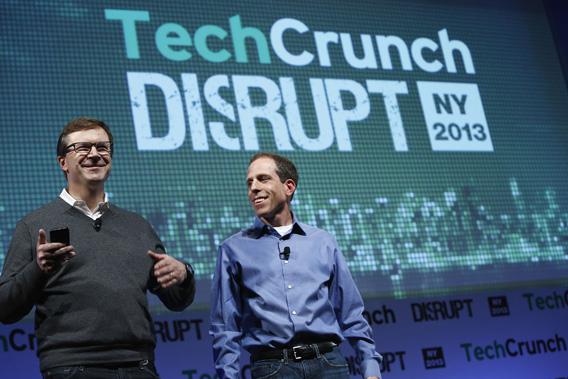Today marks the end of the TechCrunch: Disrupt NY conference. But never fear, if you want to disrupt something else there’s Disrupt SF coming in September and Disrupt Europe in Berlin in October.
That’s a lot of disruption. Enough to lead a person to the conclusion that it’s become an all-purpose technology industry buzzword, drained of meaning. A “synergy” for our time. This is a shame, because while all innovation is great, the idea of disruptive innovation as a distinctive kind of innovation has real value. And while disruptive innovation is generally a good thing, nothing inherent to the idea implies it’s the only good thing or the best thing. Entrepreneurs should not be ashamed to admit that their ideas aren’t particularly disruptive.
As you undoubtedly know, the term “disruptive innovation” comes to us from Harvard Business School professor Clayton Christensen and his excellent 1997 book The Innovator’s Dilemma. Christensen observes that many successful companies spend most of their time working on what he calls “sustaining innovations.” You are IBM, the world’s most successful manufacturer of mainframe computers, and so you pour your energy into building better and better mainframes. You look at your client base—the universe of institutions that need mainframes—and ask yourself how to keep upselling those clients on more and better mainframes. This leaves you vulnerable to a “disruptive” innovation like the personal computer.
What makes disruptive innovations so deadly is they’re not better than your product. They’re worse. Anyone who needed a mainframe at the dawn of the personal computer era would find a PC to be an incredibly lame and underpowered alternative. So you ignore the alternative in favor of meeting the needs of your customers and perfecting your product. But the disruptive product keeps iterating and improving and selling to people who didn’t need mainframe computers but who do have use for a cheap, flexible PC. Soon enough, the PC market has swamped the mainframe market and your firm is on its last legs. You’ve fallen victim to the innovator’s dilemma: Your own success in the mainframe market blinded you to the real trajectory in the industry.
This is a great idea with lots of applications. PCs are one example Christensen uses, but it doesn’t just apply to tech: Steel manufacturing is another case study in the book. You start small and cheap and low-service, you get bigger and better and eventually eat the industry. That’s disruption. It happens all the time and it’s a great concept.
But there’s more to innovation and technology than disruption! And lots of companies represented at the Disrupt conference clearly aren’t disrupting anything. I love Match.com—it’s how I met my wife—but nobody would ever have mistaken it for a too-junky-to-be-usable alternative to personal ads. It’s clearly superior, and always was. The same is true, for that matter, of Google. Yahoo built a search engine and Google built a better one. Then Google built a better webmail client. And good for them! Uber is a clever hack of misguided taxi regulations and its software is a huge advance over traditional taxi dispatch methods. But like Gmail, Uber is a pretty straightforward case of entering an existing market with a better product.
Not that there’s anything wrong with that. Christensen’s point about disruption and innovation initially caught on because it’s a smart idea. But it’s become a fad because it sounds cool.
Everyone wants to be a disruptor. But there’s nothing uniquely virtuous about disrupting, either as a way of changing the world or as a way of getting rich. Mobile phones disrupted traditional fixed line telephony (the voice quality is still worse, but nobody cares) and Nokia got rich. Then Apple invented a better, more expensive, more profitable kind of mobile phone and got way richer than Nokia ever was. And good for them! Indeed, for most of life’s tasks, what we really want is just better stuff. Walgreens’ new deluxe stores are great, I keep meaning to try the greatest hoodie ever made, the trend toward higher-quality fast food is wonderful, and “sustaining” innovations like an airplane with higher cabin pressure so you don’t get so tired and dehydrated improve the world just as much as disruptive ones.
There are a few key sectors—think of health care—where it seems like the world really would benefit from the cheaper/simpler paradigm of disruption. These are areas where the problem isn’t that the best stuff available isn’t good enough but that it’s too expensive or complicated for most people to get the best stuff most of the time. Yet the idea of deliberately fostering lower-quality alternatives sounds counterintuitive to people.
The moral of the disruption story is that this is often how progress is made. Some new idea really can’t equal the best the status quo has to offer, but that doesn’t always matter. Turning disruption into an all-purpose tech buzzword obscures its importance while simultaneously distracting innovators from real opportunities.
